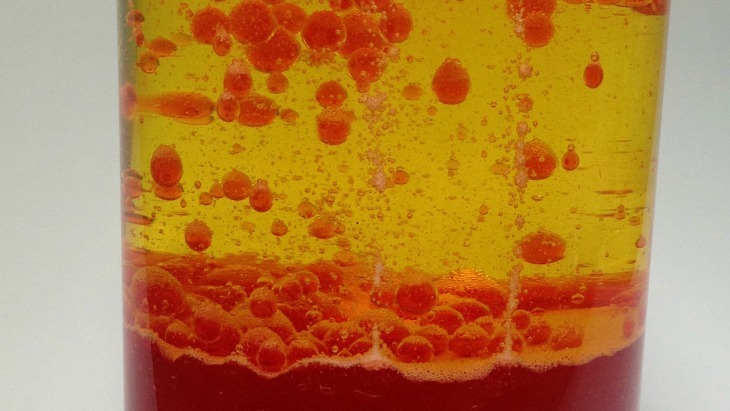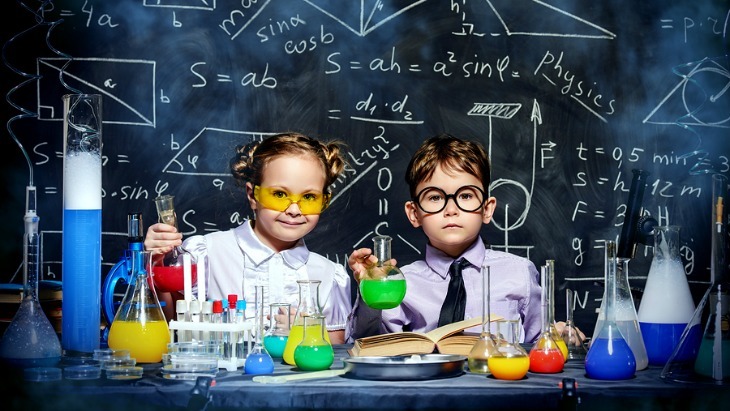By: Rachel Brittliff, Curious Kids' Science
To celebrate National Science Week (12-20 August 2017) and the Sydney Science Festival, why not get all mad-scientist with your kids in the kitchen?!
Curious Kids' Science has shared a super fun D.I.Y lava lamp experiment with ellaslist to try at home with the kids. Blobs of colour will float around in oil, just like a real lava lamp. It's super simple and looks incredible, so give it a go, and have fun whilst you learn!

What You'll Need
- A clear container such as a large glass or an empty soft drink bottle with the label removed
- Tap water
- Cooking oil such as vegetable or rice bran oil
- Soluble aspirin/Alka SeltzerTM
- Food colouring
Top Tips Before You Get Started
At-home science experiments are fun and exciting and are a great learning opportunity for kids. Some kids will just want to dive straight in and see what happens.
Others might enjoy making predictions (developing a hypothesis) before you do the experiment and then testing to see if they are right. If your child is a prediction maker, you may want to ask them:
1. What do you think will happen when I add the oil to the water?
2. What do you think will happen when I drop the food colour into the container?
3. What do you think will happen when I drop the aspirin/Alka Seltzer™ in?

Here's What To Do: It's Easy!
- Fill approximately 1/3 of the container with water.
- Slowly fill the rest of the container with oil until the container is ¾ full. If the oil and water have mixed, wait for them to separate.
- Add at least 10 drops of food colour to the container. Wait until the food colour settles into the water.
- Break a tablet in half and drop one-half into the container.
- Keep adding half tablets for as long as you like.
The Science Behind What You See
1. The oil settles above the water because oil is less dense than water. Although it is not entirely accurate, it may be easier for kids to understand if you explain that the oil is lighter than the water.
2. The oil and water don’t mix because they are made of molecules that are not attracted to each other (you could illustrate this by using magnets and showing that when you try to push the same poles of the magnets together, they push away from each other. The oil and water are basically doing the same thing).
3. When the tablet is added and sinks into the water it dissolves. As it dissolves a carbon dioxide gas is created. The gas is lighter than the oil and the water but some of the coloured water attaches to the gas bubble which then rise to the top of the oil. As the gas escapes from the liquid the blobs of coloured water sink down making the “lava lamp” effect!
For more awesome science experiments for little ones, visit Curious Kids' Science.
Curious Kids' Science is committed to bringing the joy of investigation and discovery to kids. We make science accessible and fun for them and their parents. Our science kits are suitable for children aged 4 to 11-years old and they can even be used to raise funds for your school or community group.
Reviews



 Pick a Date
Pick a Date


